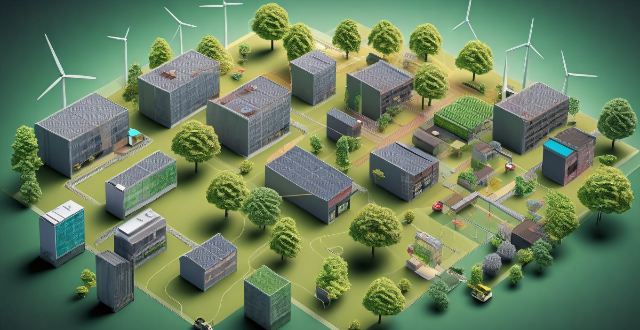The article discusses the latest trends in smart grid technology that are facilitating the integration of renewable energy sources into power systems. These trends include distributed energy resource management through microgrids and virtual power plants, advanced predictive analytics and machine learning for weather and load forecasting, various energy storage technologies like battery storage, pumped hydro storage, and flow batteries, smart infrastructure and automation involving smart meters and grid automation, electric vehicles participating in demand response programs and vehicle-to-grid technology, and blockchain applications for peer-to-peer trading and transactive energy systems. Collectively, these advancements aim to create a cleaner, more sustainable, and resilient energy system.

Latest Trends in Smart Grid Technology for Renewable Energy Integration
1. Distributed Energy Resource Management (DERMS)
- Microgrids: These are local energy grids that can disconnect from the central power grid and operate independently, often using renewable sources like solar or wind power. Microgrids improve resilience during outages and allow for better integration of distributed energy resources.
- Virtual Power Plants (VPPs): VPPs aggregate various distributed energy resources, such as solar panels, wind turbines, and energy storage systems, to function as a single coordinated entity within the power system. This enhances the predictability and reliability of renewable energy supply.
2. Advanced Predictive Analytics and Machine Learning
- Weather Forecasting: Accurate weather predictions are crucial for managing the variability of renewable sources. Advanced algorithms and machine learning models are being developed to predict wind speeds and solar irradiance more precisely.
- Load Forecasting: Predictive analytics also help in forecasting consumer demand accurately, enabling utilities to balance supply and demand more effectively and integrate renewable energy sources without compromising grid stability.
3. Energy Storage Technologies
- Battery Storage: Lithium-ion batteries have become the dominant storage technology due to their high energy density and long lifespan. They are essential for storing excess renewable energy generated during peak production times and releasing it during periods of low generation or high demand.
- Pumped Hydro Storage: While not a new technology, pumped hydro storage is gaining attention again as a way to store large amounts of energy. It involves pumping water to a higher reservoir when there's excess power and then releasing it to generate electricity when needed.
- Flow Batteries: These batteries use liquid electrolytes and can be scaled up easily to provide long-duration storage solutions suitable for renewable energy applications.
4. Smart Infrastructure and Automation
- Smart Meters: These meters enable two-way communication between consumers and utilities, allowing for real-time monitoring and management of energy consumption and encouraging users to shift their usage patterns to off-peak times when renewable energy might be abundant.
- Grid Automation: Automated grid controls can quickly respond to changes in supply or demand, making it easier to integrate variable renewable sources into the grid without human intervention delays.
5. Electric Vehicles (EVs) and Vehicle-to-Grid (V2G) Technology
- Demand Response Programs: EVs can participate in demand response programs by charging during off-peak times when renewable energy is plentiful, reducing strain on the grid during peak hours.
- Vehicle-to-Grid (V2G): This technology allows EVs not only to draw power from the grid but also to feed electricity back into it, acting as mobile energy storage units that can support the integration of renewable energy sources.
6. Blockchain and Transactive Energy Systems
- Peer-to-Peer Trading: Blockchain technology enables peer-to-peer trading of energy, where prosumers (producers + consumers) can sell their surplus renewable energy directly to other consumers or back to the grid at fair prices, incentivizing more people to adopt renewable energy solutions.
- Transactive Energy Systems: These systems use blockchain to create automated marketplaces where devices can negotiate and trade energy based on real-time data about supply, demand, and pricing, further integrating renewable sources efficiently into the grid.
By leveraging these trends and technologies, the smart grid of the future will be much better equipped to handle the challenges posed by integrating renewable energy sources, ensuring a cleaner, more sustainable, and resilient energy system for all.